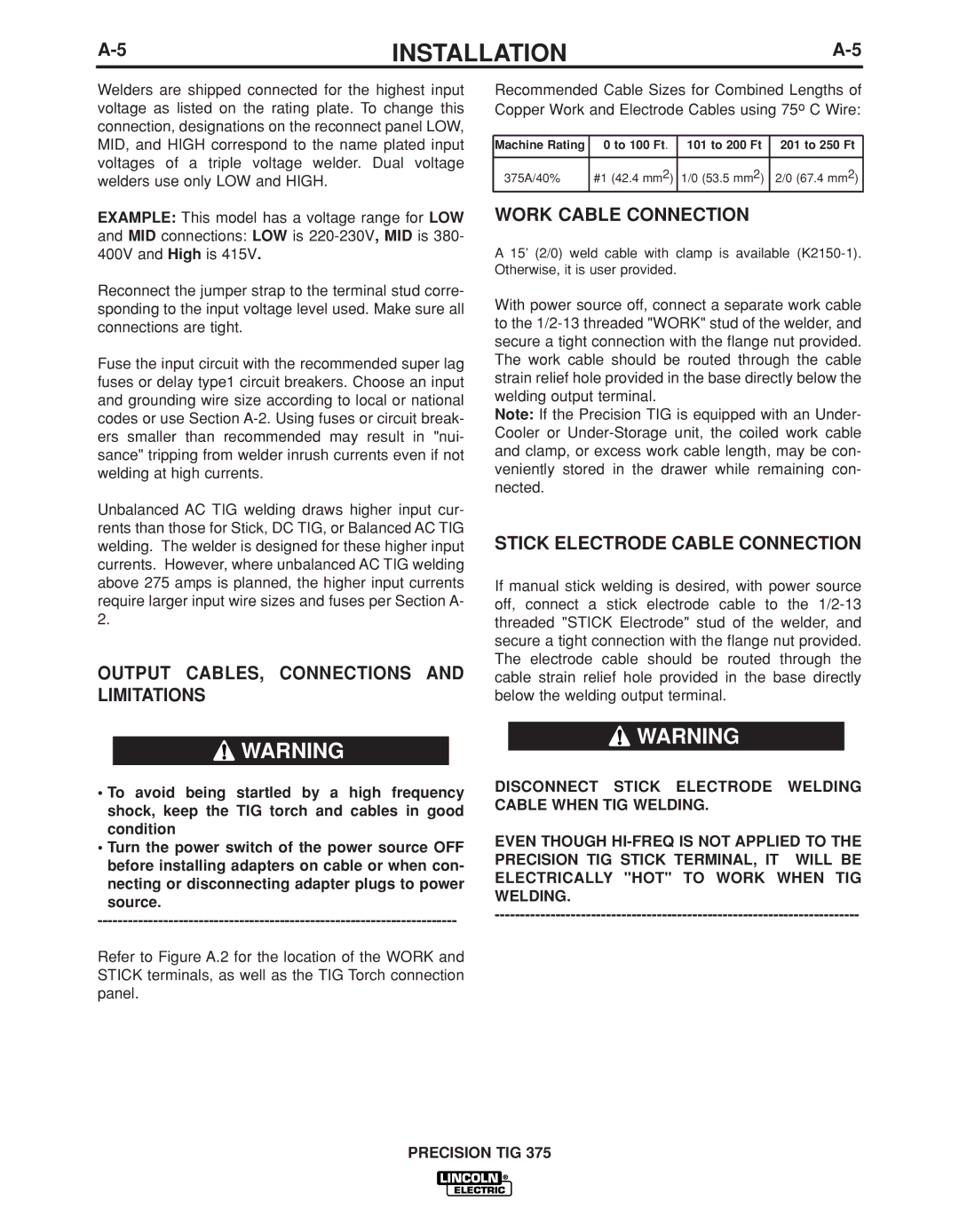
INSTALLATION | ||
|
|
|
Welders are shipped connected for the highest input voltage as listed on the rating plate. To change this connection, designations on the reconnect panel LOW, MID, and HIGH correspond to the name plated input voltages of a triple voltage welder. Dual voltage welders use only LOW and HIGH.
EXAMPLE: This model has a voltage range for LOW
and MID connections: LOW is
Reconnect the jumper strap to the terminal stud corre- sponding to the input voltage level used. Make sure all connections are tight.
Fuse the input circuit with the recommended super lag fuses or delay type1 circuit breakers. Choose an input and grounding wire size according to local or national codes or use Section
Unbalanced AC TIG welding draws higher input cur- rents than those for Stick, DC TIG, or Balanced AC TIG welding. The welder is designed for these higher input currents. However, where unbalanced AC TIG welding above 275 amps is planned, the higher input currents require larger input wire sizes and fuses per Section A- 2.
OUTPUT CABLES, CONNECTIONS AND LIMITATIONS
Recommended Cable Sizes for Combined Lengths of Copper Work and Electrode Cables using 75o C Wire:
Machine Rating | 0 to 100 Ft. | 101 to 200 Ft | 201 to 250 Ft |
|
|
|
|
375A/40% | #1 (42.4 mm2) | 1/0 (53.5 mm2) | 2/0 (67.4 mm2) |
WORK CABLE CONNECTION
A 15’ (2/0) weld cable with clamp is available
With power source off, connect a separate work cable to the
Note: If the Precision TIG is equipped with an Under- Cooler or
STICK ELECTRODE CABLE CONNECTION
If manual stick welding is desired, with power source off, connect a stick electrode cable to the
![]() WARNING
WARNING
•To avoid being startled by a high frequency shock, keep the TIG torch and cables in good condition
•Turn the power switch of the power source OFF before installing adapters on cable or when con- necting or disconnecting adapter plugs to power source.
Refer to Figure A.2 for the location of the WORK and STICK terminals, as well as the TIG Torch connection panel.
![]() WARNING
WARNING
DISCONNECT STICK ELECTRODE WELDING CABLE WHEN TIG WELDING.
EVEN THOUGH
PRECISION TIG 375
